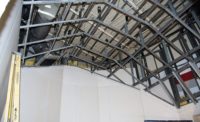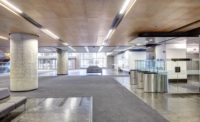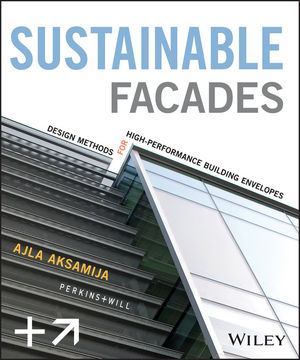Until now, acoustics in commercial office buildings has not been a formal part of the LEED rating systems except on a case-by-case basis with possible credits in the “Innovation in Design” or Pilot Credit 24 categories.
Under the new LEED v4 criteria, however, it is possible to qualify for two points for acoustic performance in the Indoor Environmental Quality (IEQ) section of the new Interior Design and Construction (Commercial Interiors) rating system, and one point in the Building Design and Construction (New Construction) system.
According to Dr. Kenneth P. Roy, Senior Principal Research Scientist for Acoustic Technologies at Armstrong, improving the acoustic environment of commercial office spaces to meet the LEED criteria is not difficult as long as attention is paid to the proper choice of ceilings.
Closed Plan and Open Plan Spaces
Dr. Roy explains that the main benefit of the ceiling in closed plan spaces such as conference rooms and private offices is to block
the transmission of sound between adjacent spaces, especially when the spaces share a common ceiling plenum.
In open plan spaces, he explains that the main benefit of the ceiling is to absorb the sound that would normally bounce off hard surfaces into nearby spaces or cubicles, causing intrusive distractions.
Armstrong offers a number of ceiling options that meet these requirements, including its new line of Calla ceilings. With its high Noise Reduction Coefficient (NRC) of 0.85 and Ceiling Attenuation Class (CAC) of 28, Calla offers a combination of sound absorbing and sound blocking capabilities in a single product, ensuring a balanced acoustical design in both closed and open plan spaces.
Open Plenum Spaces
Dr. Roy explains that noise issues in open plenum spaces can be addressed through the use of acoustical clouds and canopies, two types of “free-floating” options that add sound absorption while still allowing for the exposed look.
Both options absorb sound on both their front and back surfaces. As a result, they provide greater sound absorption than a continuous ceiling of the same surface area, reducing reverberation by up to 50 percent with only 20 percent coverage.
For example, Formations Acoustical Clouds and SoundScapes Shapes Acoustical Clouds, both from Armstrong, provide a type of interrupted ceiling plane when suspended above work areas. As such, they help control distant reverberation and reflections between cubicles, reducing occupant annoyance and distractions.
SoundScapes Acoustical Canopies from Armstrong also reduce reverberation but are much different in size and look compared to acoustical clouds. Formations clouds are available in standard sizes up to 14' x 14', while SoundScapes canopies are usually 3' x 3' or 4' x 6' in size. Visually, acoustical clouds are flat, while canopies are curved.
For additional information about improving the acoustics of commercial office spaces, visit armstrong.com/acoustics.








Report Abusive Comment